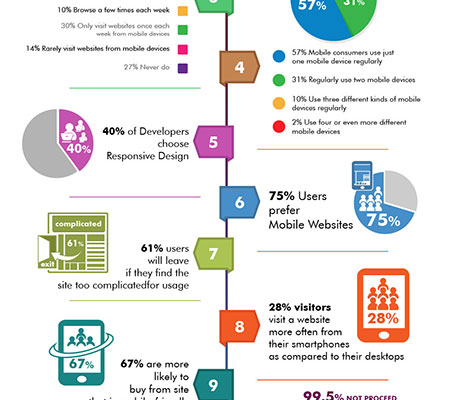The Evolution Of Site Layout: From Past To Existing
The Evolution Of Site Layout: From Past To Existing
Blog Article
https://www.forbes.com/sites/forbesagencycouncil/2021/11/03/10-non-digital-inbound-marketing-tactics-to-turn-consumers-into-prospects/ By-Booker Stender
In the past, sites were straightforward and concentrated on details. Navigating was direct, and style was for desktop computers. Currently, individual experience is key. Data guides designs for very easy navigation. Responsive layouts fit different tools. Today, dark setting decreases stress, and minimalist menus enhance navigation. Interactive features engage customers, and bold visuals attract attention. AI integration improves interaction. See just how layout has evolved to improve your on-line journey.
Early Days of Website Design
In the very early days of web design, simplicity reigned supreme. Sites were fundamental, with restricted shades, fonts, and formats. The focus got on supplying information rather than fancy visuals. Customers accessed the web through sluggish dial-up links, so rate and performance were crucial.
Navigation food selections were straightforward, generally situated on top or side of the page. Sites were developed for desktop computers, as mobile browsing wasn't yet prevalent. Material was king, and developers prioritized easy readability over complex style elements.
https://www.forbes.com/sites/forbescoachescouncil/2021/02/25/how-to-create-a-digital-marketing-strategy-eight-steps-to-laser-focus-your-plan/ was the primary coding language utilized, and developers needed to work within its constraints. Computer animations and interactive features were marginal compared to today's requirements. Sites were static, with little vibrant material or personalized individual experiences.
Surge of User-Focused Layout
With the development of website layout, a shift in the direction of user-focused design concepts has actually ended up being increasingly popular. Today, producing websites that prioritize user experience is important for engaging site visitors and attaining business goals. User-focused design includes comprehending the demands, choices, and actions of your target audience to customize the website's format, material, and includes appropriately.
Developers currently conduct comprehensive research study, such as customer studies and use screening, to gather understandings and feedback straight from users. This data-driven method assists in creating intuitive navigating, clear calls-to-action, and aesthetically appealing interfaces that reverberate with visitors. By placing the user at the facility of the style procedure, websites can supply a much more tailored and pleasurable experience.
Responsive layout has actually likewise become a vital facet of user-focused layout, making sure that internet sites are optimized for various tools and display dimensions. This versatility improves access and functionality, catering to the varied means customers communicate with web sites today. Fundamentally, the increase of user-focused layout represents a shift towards creating digital experiences that prioritize the requirements and assumptions of the end user.
Modern Trends in Website Design
Explore the latest patterns forming web design today. One famous trend is dark setting layout, using a smooth and modern-day appearance while lowering eye stress in low-light settings. One more key pattern is minimalist navigation, streamlining menus and boosting individual experience by concentrating on essential elements. Integrating micro-interactions, such as animated switches or scrolling results, can create a more engaging and interactive web site. Responsive design continues to be crucial, making sure smooth customer experiences across numerous gadgets. Additionally, using bold typography and unbalanced layouts can add visual rate of interest and accentuate certain content.
Incorporating AI technology, like chatbots for consumer assistance or individualized suggestions, improves individual engagement and improves processes. Availability has also become a substantial pattern, with designers focusing on inclusive design practices to cater to varied individual needs. Embracing sustainability by enhancing site performance for rate and effectiveness is one more arising pattern in website design. Collaborating with customer comments and data analytics to iterate and enhance layout constantly is essential for staying pertinent in the ever-evolving digital landscape. By accepting these contemporary fads, you can develop a visually appealing, user-friendly website that reverberates with your target market.
Verdict
As you review the advancement of web site layout from the very early days to currently, you can see how user-focused design has come to be the driving pressure behind modern fads.
Welcome the journey of change and adjustment in website design, always maintaining the user experience at the center.
Tippingpointdigital
Remain present with the current trends and innovations, and never stop advancing your approach to develop visually magnificent and easy to use internet sites.
Advance, adjust, and develop - the future of web design remains in your hands.
